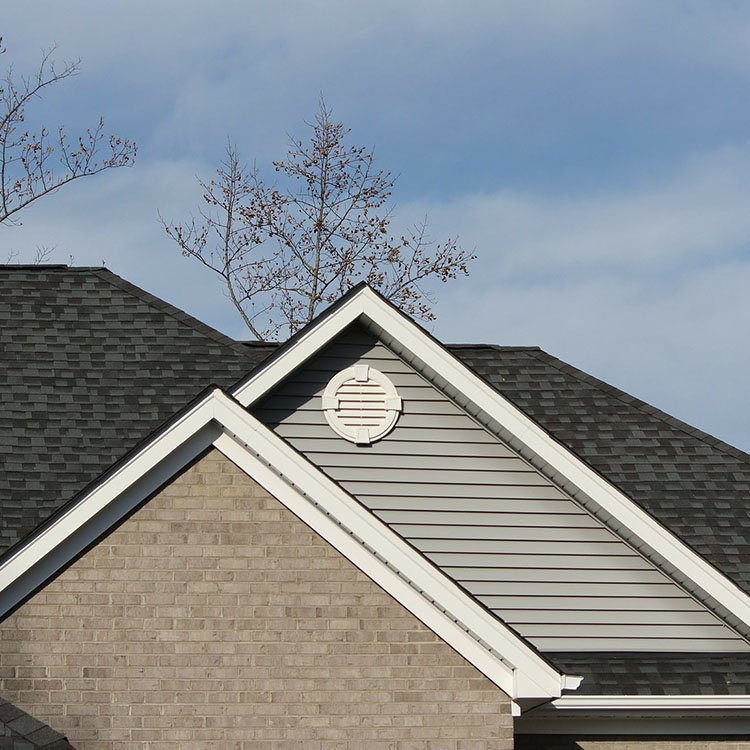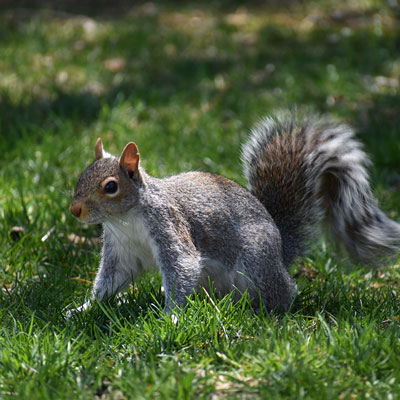Squirrels in the Attic?!?!
With all that information about squirrels in the wild, you may be asking yourself: then why do squirrels want to come into my home? An excellent question! It does seem like squirrels have it made in the shade even in the wild. Many humans even feed them! However, many squirrels do seek additional shelter in your attic space.
Why? Well, you barely use your attic (except for those Christmas decorations from your mother-in -law that are awful but you have to keep just in case she mentions it when she’s in town) so squirrels can go relatively unnoticed for periods of time. Attics are also dry and warm, which gives them shelter from the rain and, if you live somewhere with harsh weather, from the cold.
Aside from weather related shelter, squirrels are also seeking shelter from the high number of natural predators that they have. Because squirrels are relatively small mammals they are not very high up on the food chain and are constantly on the lookout for any of their many predators. Some of these include: hawks, owls, coyotes, wildcats, and snakes. With such a long list of predators most squirrels are just looking for a shelter that they can finally relax in, unfortunately your attic is a perfect spot for that.
Baby squirrels are born blind and completely defenseless, so a common occurrence is that a mother squirrel has gotten inside in order to have her babies and shelter them in an environment where larger predators cannot get to them.
The insulation in your attic that helps keep you warm, also provides perfect nesting material for squirrels. It keeps their babies nice and warm, especially when they are all nestled in together.

So, you’re starting to really think that sound in your attic is a squirrel, huh? Maybe the same one your wife has been feeding, even though you never thought it was a great idea? Well, there are some signs that you can listen for that would be able to tell you if you’re dealing with a squirrel or something else.
First off, it’s important to keep track of when you hear the noises. Squirrels are diurnal, meaning that they are active during the day, so you should be hearing noises during the early morning and early evening. This would be when the little guy is waking up and heading out, and then when he returns and settles in. Much like your schedule.
Because squirrels are smaller animals, the noises they make can occasionally be undetected. However, if you listen carefully, you would be able to hear their light scurrying and scratching. These sounds could sound like they are right above you and occasionally like they are coming from a wall, just depending on where the squirrel is in the attic. As you’ve probably seen, squirrels are very fast little animals, so you can only expect that the sounds you hear would be fast scurrying as well.

Squirrel activity is common all throughout the year, however you may experience more activity during the months that mother squirrels typically have their babies. Typically the mother would want to be in the attic to have her litter. Squirrels can have two litters a year, between February and April and then again between August and September. These would be the peak months for squirrel activity in attics. When the babies are born they are completely helpless for the first 8 weeks of their life.
If you have seen a squirrel climb up a tree, you have a pretty good understanding how agile and quick they are. As well as the fact that they can basically climb straight up, because their little claws can grip pretty much anything. These traits are what makes it possible for them to gain access to your home with ease.
Most times, squirrels can climb up trees close to your home and jump onto your roof, from that point it is just a matter of finding or creating a hole they can squeeze into. As unbelievable as it sounds, squirrels can fit into a hole that’s only about one and a half inches! This can make finding their entry point very difficult, as well as any other potential entry points that they can use.
Commonly, you can find entry points in roof returns (where your shingles meet the soffit), near vents that may be open, or near pipes that may be open. While not common, they can also gain entry through your garage or through stairs as well. Essentially if you have any open space on the exterior of your home, squirrels can likely gain access.
Sometimes even if the hole is too small for them to fit through initially, squirrels can gnaw on the sides of it to widen it large enough for them to fit through. This is why it is important to locate and seal every opening on your home to prevent the squirrels from finding a new way into your home.
If you already have identified that you have a squirrel and you are in the process of sealing any future access points for them, make sure that you didn’t have a momma and babies. If the babies are left in the attic, not only will they suffer without mom, but (like any mother) if momma is separated from her babies and unable to get back to them she will go CRAZY. If you have kids, you can relate. She will end up causing more damage to your home than original trying to get back to her babies.

We’ve gone over a couple different ways of being able to tell if a squirrel is in your attic, but it is so important to ensure that you are looking for the right animal, otherwise you’ll never get rid of the problem.
So, we’ve established the noises that squirrels make. Typically, quick, and light scurrying noises. The noises are occurring during the daytime, starting early in the morning and ending early in the evening. Usually in the months that they would be nesting, so February to April and August to September.
If you’ve walked around your house and seen access points with obvious chew marks on them, this is another obvious sign of squirrels. Squirrels can fit into some pretty tiny holes – an inch and a half! - however, if the hole is just a little too small, they use their big teeth to enlarge the hole slightly.
The worst, but best, tell-tale sign of squirrels is identifying the droppings. Squirrel droppings look like tiny brown grains of rice, however if you compare it to rodent droppings they are a bit bigger. This can sometimes make it difficult to determine which animal you’re dealing with. Squirrel droppings will also turn to a lighter shade of brown over time. So, if you have only dark brown droppings, your squirrel friend has recently moved in; however, if you have a mixture of both dark and light brown coloring, your squirrel friend has more than likely been there for a while.
Finally, you want to look for gnaw marks and nesting signs. Squirrels will chew on pretty much everything, and if they get their paws on the wrong thing it can get pretty dangerous! One of the first things you should check are any electrical wires you have in the attic. This is probably one of the worst things they can chew through as it can create a fire hazard in the home. Next you should look at the wooden beams, it is pretty easy to spot little teeth marks on them. As for nesting, they are more than likely ripping up insulation to create a little nest-like structure. These are typically located in a corner where the squirrel feels as though her babies are safely hidden. You’d be able to see where the insulation looks disturbed. Just be careful, as mama squirrel can get pretty mean if her new babies are tucked in there and you get too close!